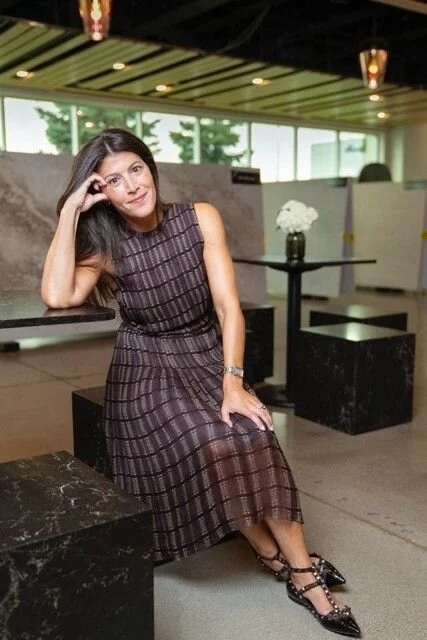Great workplaces are driven by a shared vision—the blend of an organization’s culture and a strategy for how people can do their best work. This shared vision inspires people to thrive, and as a result their organizations thrive. Placing the wellbeing of people at the core can create a happier and more productive workforce, increasing the chances for people to succeed within the organization’s culture and “live out” the vision.
Amazon's New Challenge: Making Two Headquarters Seem Like One
Kay Sargent, a senior principal at architectural design and planning firm HOK, has helped companies such as Morgan Stanley, Cisco Systems Inc. and Equifax Inc. reconcile where and how to create new workspaces. She said the main reason companies maintain large satellite campuses with equal stature to their official headquarters is to attract a new, more diverse pool of talent.
Workplace Designers Embrace Technology and Data to Benefit Workers
To compete in today’s fast-paced, complex, global economy, organizations need people who come to work energized, ready to generate new ideas, solve problems in new ways and make meaningful progress every day. But, the reality is highly engaged workers are the exception not the rule.
Gartner: Digital workplace shifts required buy-in from across lines of business
Digital workplace leaders need to put a framework in place to ensure digital workplace initiatives succeed, according to a new report from Gartner.
Watch: Powered by Human Experience - London-based Sky, Europe’s leading Entertainment Company
To give you a practical sense of one client’s journey to enhance human experience, please watch this story from London-based Sky, Europe’s leading entertainment company.
Remote workers perceived as less valued by management than office based staff
“Remote workers don’t have a physical presence in the office, so their colleagues may be under the impression that they bring less to the table or aren’t a member of the team, even though that’s often not true.”
How to Design a Stunning Modern Office
Modern style: a classic and popular design aesthetic for offices and homes alike. Contrary to common belief, this design does not equal whatever is currently in style. Mid-century modern, referring to the time period between the 1940’s and 1960’s, laid the foundations for what we now consider modern design.
Guest Experience: A Lesson in Flexibility
Some huge cultural shifts in the way people use the built environment are tearing across building typologies, geographies and demographics, and conversations at the proverbial watercooler reveal that designers at CallisonRTKL have taken note.
Amazon Is Planning a Second Headquarters With 50,000 Jobs
Amazon said on Thursday that it was searching for a second headquarters in North America, a huge new development that would cost as much as $5 billion to build and run, and would house as many as 50,000 employees.
Comparing BOMA 2010 and 2017 Office Standards
This fall, the Building Owners and Managers Association International (BOMA) will release the latest version of its Office Standard, which provides a uniform basis for measuring rentable area in both existing and new office buildings. The 2017 version will adopt the best practices learned from the 2010 Standard and seeks to accommodate design and amenity trends, which have evolved since the previous standard was released.
No Need To Worry About Robots Replacing Human Workers? Look At History
As automation and artificial intelligence technologies improve, many people worry about the future of work. If millions of human workers no longer have jobs, the worriers ask, what will people do, how will they provide for themselves and their families, and what changes might occur (or be needed) in order for society to adjust?
When Less is More and Less is a Bore
In recent years, a renewed focus on minimalism as a design aesthetic, fashion trend, and even a lifestyle has pervaded society and pop culture.
How to Design Acoustics for a Noisy Open Office Plan
Ever since the open office plan was introduced as the so-called ‘best design option’ for the 21st-century workplace, a major debate has been circulating about whether or not this has actually been more helpful or harmful to workers’ productivity levels.
The United Workplace launches to support business workplace strategy on a global scale
Businesses who are thinking globally as they execute their growth plans and try to build an international presence, may want to replicate a similar working culture in every single location. It is important, however to achieve a balance between reflecting the local market culture and the values and identity of the business itself.
Knoll at the 2017 IFMA Conference in Tulsa, OK
Kylie Roth, Knoll Senior Director of Workplace Research, presents the company's latest planning approach, Immersive Planning.
How automation is shaping the workplace of the future
Through RPA Asian businesses can automate many repetitive processes, in both front and back offices.
The Future of Work [Infographic]
In 2027, human beings will still be at the center of work, even as intelligent software and machines become our co-workers. Gartner analysts outline six assertions for work in 2027 to fully prepare CIOs on how to ride those assertions to greater business and personal success.
Neuroscientists have figured out why you can’t concentrate at work
Even though most people think about themselves as primarily visual beings, neuroscience reveals a complex “connectome” of brain cells that connects all of our senses. Try writing a report in a noisy, uncomfortable place with the smells of the office microwave wafting over to your desk, and the importance of other senses becomes clear.
Salesforce's Top Floor Amenity Is A Rarity In Office Design
Salesforce is adding an amenity not seen in many tech offices. Instead of using the top floor for executive suites, Salesforce is creating Ohana Floors for employees, customers, partners and the local community to use, according to Salesforce Executive Vice President, Real Estate, Strategic Events & Executive Briefing Centers Elizabeth Pinkham.
From standup comedy classes to free massages – wellness at work goes mainstream
It’s not just corporate giants like Google that run impressive wellbeing schemes. Smaller businesses are coming up with innovative ways to keep staff happy






















![The Future of Work [Infographic]](https://images.squarespace-cdn.com/content/v1/55b25edee4b00a6772a63fc6/1504659598434-N36G6ECZ66OTB42DTE0P/Screen+Shot+2017-09-05+at+5.59.45+PM.png)


